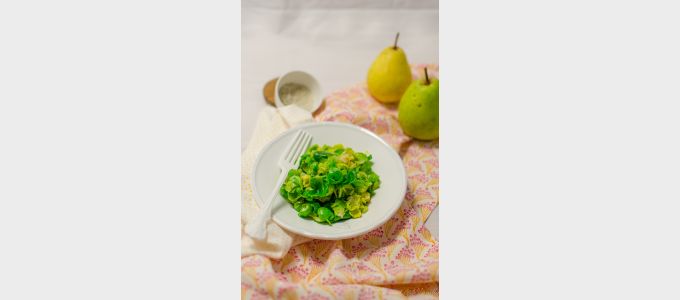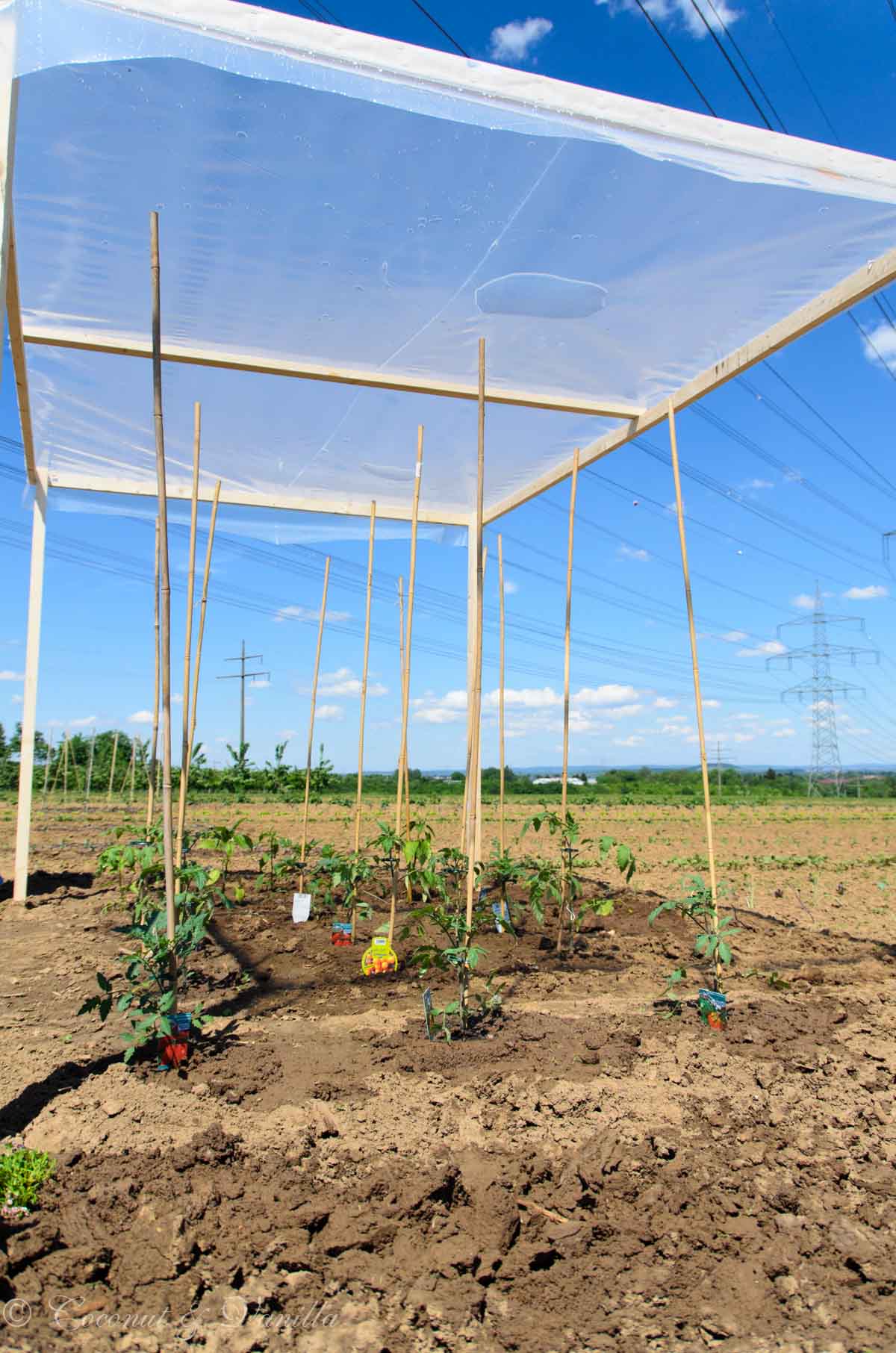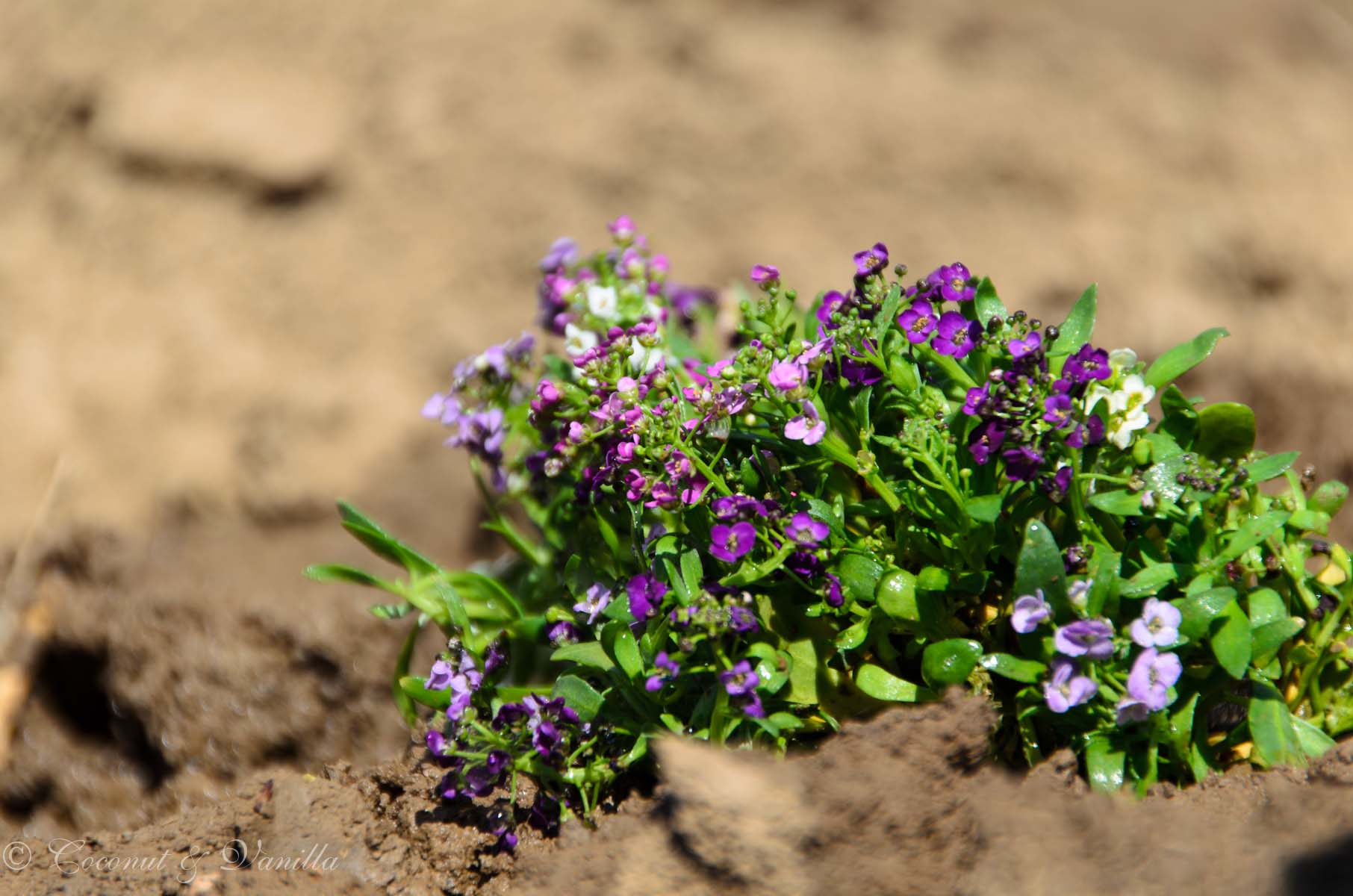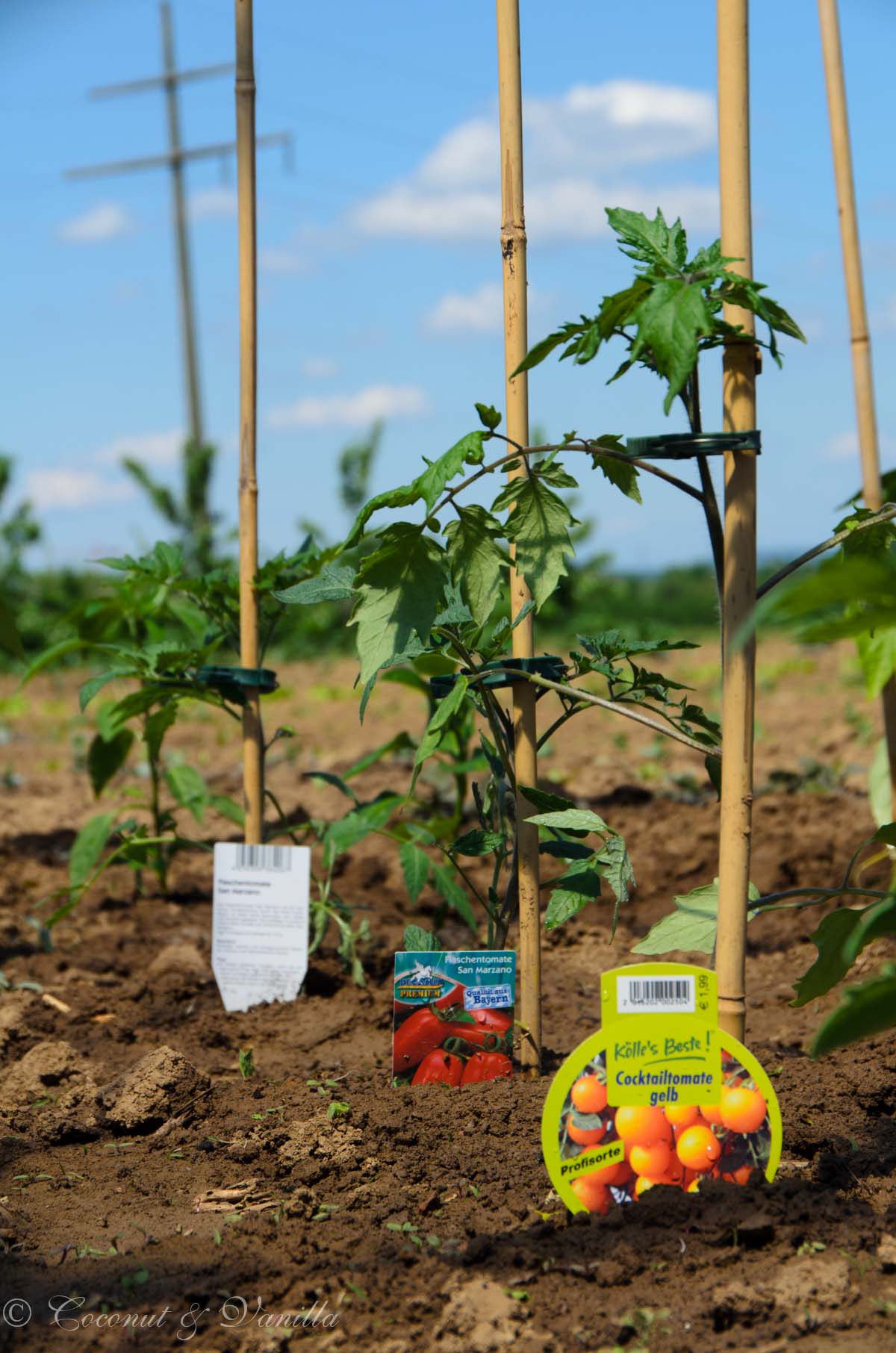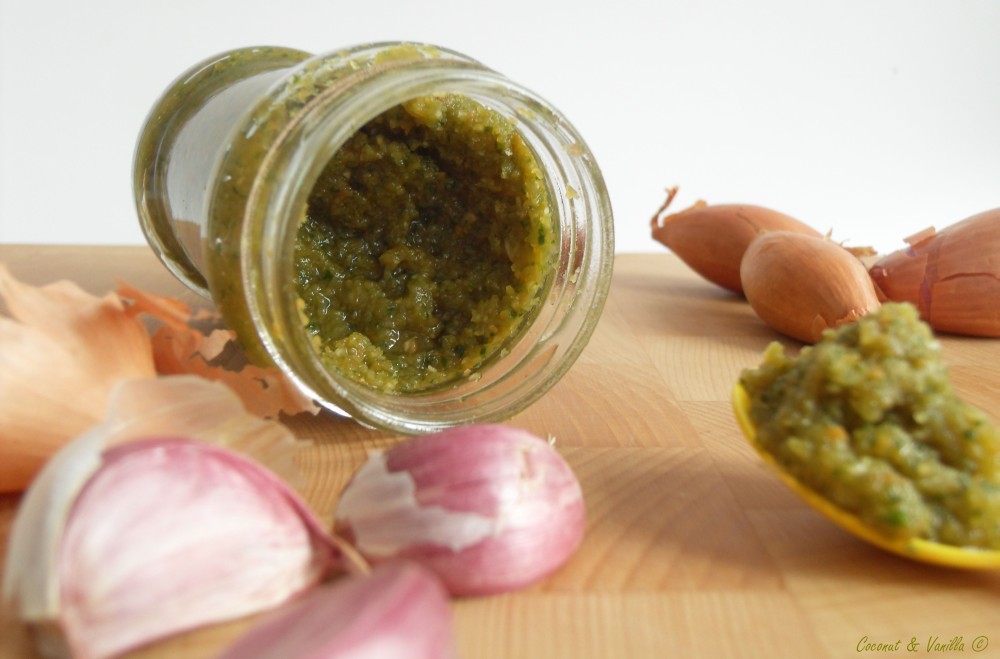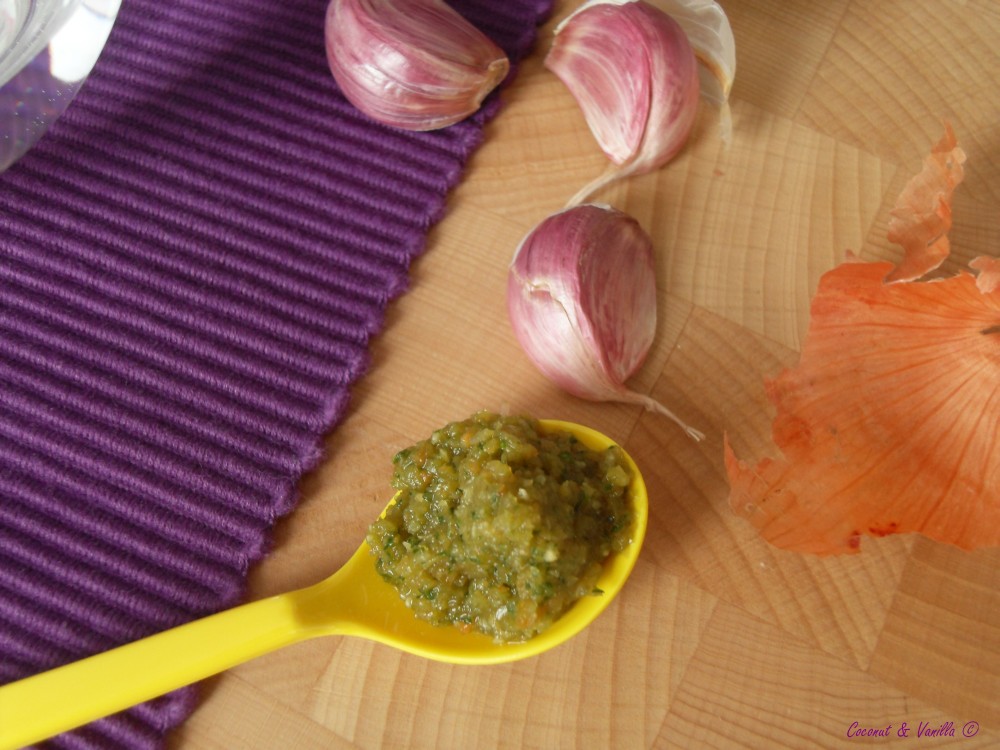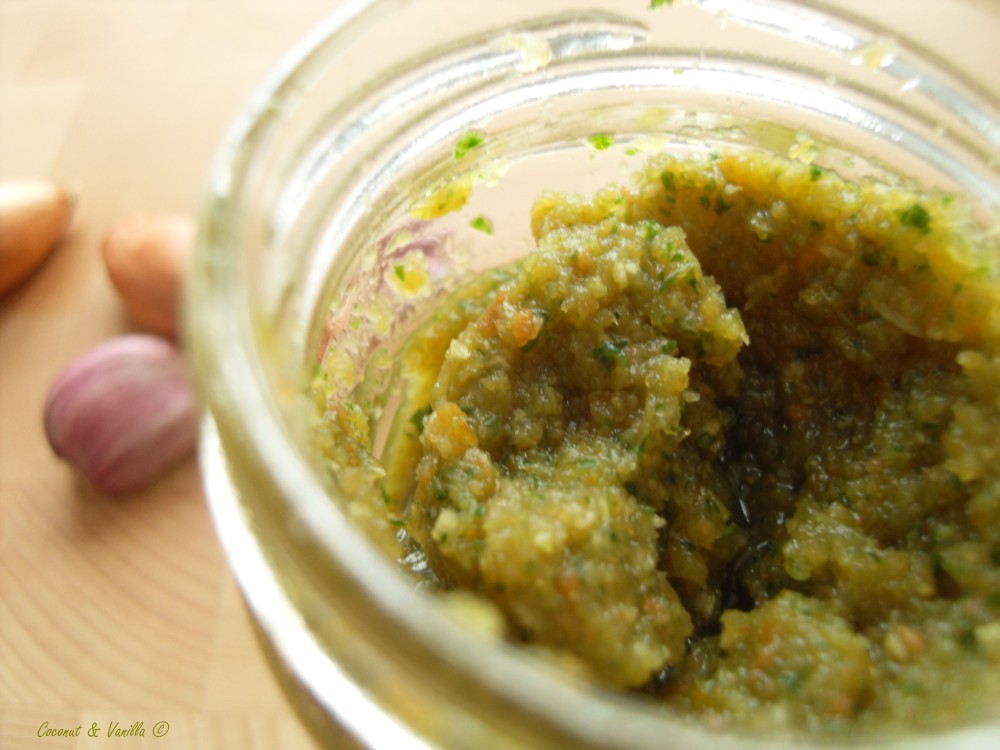Nach Weihnachten und Silvester, der ganzen Völlerei möchte man sich wieder auf gesunde und leichte Kost besinnen. Also manche Leute. Es ist nicht so als würde ich Salate nicht mögen. Sättigende Salate aus vielen verschiedenen Komponenten und wenig Blattgrün finde ich sehr lecker. Das Problem ist nur, dass es mich alte Frostbeule nicht wärmt. Das gute an diesem Rosenkohlsalat mit Birne: er ist warm! Der Nachteil: ihr müsst die Blättchen vom Rosenkohl abzupfen!
Ja, ihr habt richtig gelesen! Und nein, ich bin nicht bekloppt!
Rosenkohl ist wirklich nicht mein Lieblingsgemüse, was kurios ist, wenn man weiß, dass ich es als Kind wirklich gerne gegessen habe (normalerweise ist es immer umgekehrt). Aber sobald man sich die elende Sisyphusarbeit macht und die Blättchen abzupft wird er richtig lecker!
Ich liebe diesen Salat, weil er so gut schmeckt, ich kann euch gar nicht beschreiben wie gut! Die Birne ist essentiell hier. Wenn sie in der Pfanne zerläuft und den Rosenkohl umhüllt bringt sie eine wunderbare aromatische Süße mit sich. Der Zimt verleiht dem ganzen eine herrliche Würze und es ergibt sich mit der erdigen Note des Rosenkohls eine tolles Aromenspiel!

Vor zwei Jahren: Dulce de Leche Cheesecake mit Fleur de Sel
Vor fünf Jahren: glutenfreie Nanaimobars
Rosenkohlsalat mit Birne und Zimt
nach einem Rezept von Tim Mälzer
ergibt: 2 große Portionen
Zutaten:
- 500 g Rosenkohl, gewaschen und abgetropft
- 1 reife aromatische Birne, z.B. Abate, Williams-Christ
- Butter
- 1 EL brauner Zucker
- 1/4 – 1/2 TL Zimt
- 100 ml Gemüsebrühe
- Limettensaft
- Meersalz, frisch gemahlener schwarzer Pfeffer
Von den Rosenkohlröschen die Blätter abzupfen. Die äußeren schlechten wegschmeißen. Es geht besser, wenn man immer wieder ein Stück des Strunks abschneidet. Holt Euch dafür am besten eine/n Assistenten/in an eure Seite, dann quält ihr euch wenigstens nicht allein und habt nur die halbe Arbeit ;).
Die Birne schälen, vierteln und das Kerngehäuse entfernen. Die Birne quer halbieren und in dünne Scheiben schneiden.
Die Teller im Ofen (60 – 70° C) vorwärmen damit der Salat nicht gleich wieder kalt ist, wenn er auf den Tisch kommt.
In einer großen Pfanne den Zucker karamellisieren lassen. Die Butter zugeben. Die Rosenkohlblätter darin kurz anschwenken. Den Zimt und die Brühe zugeben. Die Birne unterrühren. Alles kurz aufkochen und alles bei kleiner Hitze zugedeckt 5 Minuten ziehen lassen. Mit Salz, Pfeffer und einem Schuss Limettensaft abschmecken.
Auf den warmen Teller servieren.
After the gluttony of Christmas and New Years Eve people want to concentrate on healthy, light food. Ok, some people. It’s not that I don’t like salads. I love salads that have a lot of going on in texture and where only little leavy greens are involved. The big problem with salad is that they are cold. Not good for someone like me who is freezing a lot. The good thing about this brussel sprout salad with pear and cinnamon: it’s warm! The downside: you have to pluck the leaves of the brussel sprouts!
Yes, you heard right! No, I’m not insane!
Brussel sprouts are not my favourite vegetable, which is funny, as I liked eating it as a child (normally it is the other way round). But as soon you are done with the sisyphus work of plucking the leaves of, the salad is extremly good!
I love this salad, because it tastes so incredibly good, I cannot describe how good! The pear is essential here. When it melts in the pan it coats the brussel sprouts and leaves a wonderful aromatic sweetness. The cinnamon warms, too and spices things up! All this combines very well with the slightly earthy taste of the brussel sprouts.

Two years ago: dulce de leche cheesecake with fleur de sel
Five years ago: gluten-free nanaimo bars
Brussel Sprout Salad with Pear and Cinnamon
adapted from a recipe by Tim Mälzer
yields: 2 large portions
Ingredients
- 500 g brussel sprouts, rinsed and drained
- 1 ripe aromatic pear, like Abate, Williams-Christ
- butter
- 1 Tbsp brown sugar
- 1/4 – 1/2 tsp cinnamon
- 100 ml vegetable broth
- sea salt, freshly ground black pepper
- lime juice
Pluck the leaves from the brussel sprouts. Discard the outer ones when they are in bad shape. It is easier, if you cut of a bit of the stem from time to time. Hire an assistant for that job, so it’s only half the work ;).
Peel the pear, quarter it and remove the core. Halve the pear across and slice thinly.
Preheat the plates in the oven (60° C) to prevent the salad getting cold in an instant after serving it.
Caramelize the sugar in a large pan. Add the butter. Sauté the brussel sprout leaves shortly. Add the cinnamon and broth and bring to a boil. Reduce the heat to low and let it simmer for 5 minutes with lid on. Season with sea salt, black pepper and a dash of lime juice.
Serve instantly on the warm plates.

